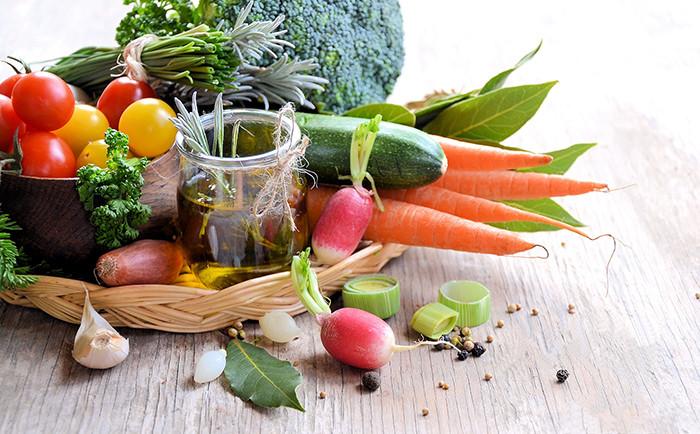
Spring Up Your Diet
Share
pring has arrived, and with longer days and warmer weather comes plenty of fresh produce. This is the perfect season to “spring clean” your diet, so less heavy fall and winter fare and more fruits and veggies. In-season produce is full of the most minerals and vitamins, so make room for these nutritional powerhouses.
Asparagus
Dubbed the “food of kings” by Louis XIV of France, asparagus definitely have a royal nutritional profile. Low in fat and high in fiber, these tender stalks are a good source of iron, B vitamins, and vitamin C. Asparagus are at their peak from March through June but can be purchased year-round. Once harvested, asparagus deteriorate rapidly, so place them in cool storage to retain freshness and nutrition. Delicious roasted, grilled, or lightly sautéed in olive oil, these seasonal spears make a tasty addition to any meal.
Radishes
For a burst of flavor with very few calories, look no further than the radish. Radishes are root vegetables with a distinctive flavor that ranges from mild to sharp, depending on variety. One cup of sliced red radishes will give you 30% of your daily vitamin C requirement in less than 25 calories. To choose the best, pick radishes that are deep in color with solid roots. This root vegetable is a flavorful addition to soups, condiments, and cooked dishes. You can also eat the green tops, which lends a peppery taste to salads.
Peas
Fresh peas including sugar snap peas, snow peas, and green peas can usually be found year-round but are at their peak from April through July. Like most legumes, peas are low in fat and high in fiber and are a good source of plant protein. Their nutritional profile differs depending on variety, with green peas providing more B vitamins and zinc, while snow and snap peas offer more vitamin C. Peas are perfect as crudités with dips, tossed in salads, and served as a side dish.
Artichokes
While artichokes are harvested year-round, the crop peaks from March through May. A 2-ounce serving (approximately the size of the bottom of one large artichoke) has about 3 grams of fiber and just 25 calories. Artichokes are also a good source of iron, potassium, magnesium, folate, and vitamin C. Try them served in dips, or bake and toss in pastas or salads.
Morel Mushrooms
Cone-shaped with a spongy texture, morels are a springtime delicacy making an entrance at fine restaurants and farmers' markets in early spring through late June. A member of the truffle family, these wild mushrooms are best known for their honeycomb texture and nutty flavor. The spongy texture of morels make them ideal for soaking up flavorful sauces. Pair with other spring veggies like asparagus, spring onions, and green peas or toss in pastas, sautés, and salads.